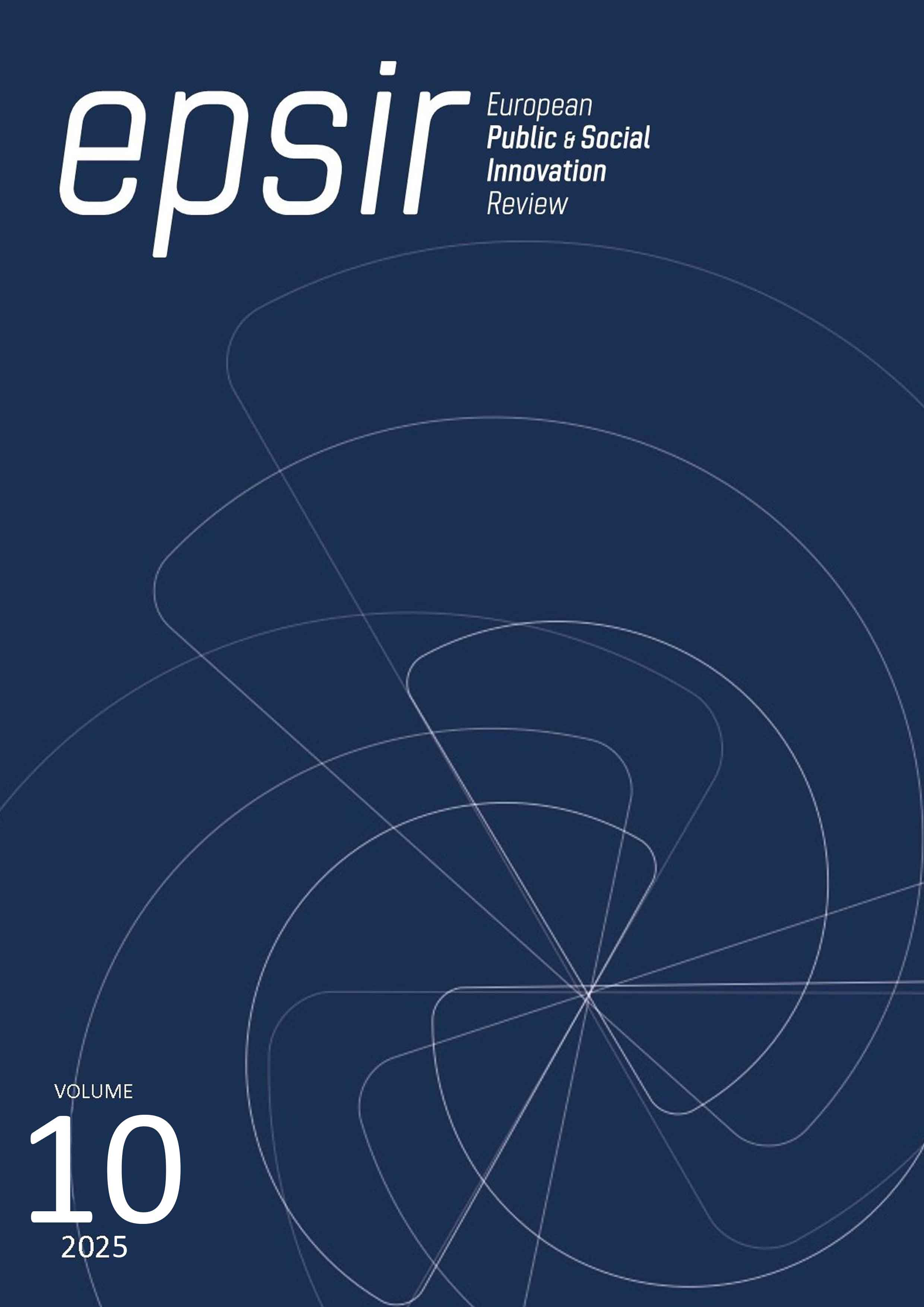Iniciación a la geometría en educación infantil. Las metodologías exhibidas
DOI:
https://doi.org/10.31637/epsir-2025-1929Palabras clave:
geometría, educación infantil, estrategias metodológicas, currículum, figuras geométricas, matemática, enseñanza, aprendizajeResumen
Introducción: La enseñanza de la geometría en educación infantil, es un proceso fundamental en el desarrollo de habilidades matemáticas y cognitivas. Metodología: El objetivo es conocer las estrategias metodológicas para iniciar la enseñanza y aprendizaje de la geometría en educación infantil, la investigación se realizó bajo el enfoque cualitativo de tipo descriptiva-interpretativa y utilizó el diseño interpretativo no experimental. Resultados: Se destacan diversas estrategias y actividades lúdicas utilizadas para enseñar geometría, así como una variedad de materiales. Discusión: Se puede identificar cómo las educadoras plantean la presentación de la geometría en el contexto del nivel inicial, considerando los objetivos de enseñanza, los contenidos geométricos a abordar y las estrategias pedagógicas utilizadas para introducir los conceptos geométricos a las niñas y los niños. Conclusiones: Las educadoras de infantil diseñan experiencias de aprendizajes basadas en su decisión dando cuenta de la poca participación de las niñas y los niños en la toma de decisiones. De igual forma, utilizan variados materiales manufacturados, sin embargo, existen espacios como la naturaleza que no son considerados para la enseñanza de la geometría.
Descargas
Citas
Acosta, M., Blanco, L. y Gómez, K. (2010). Situaciones adidácticas para la enseñanza de la simetría axial utilizando Cabri como medio. Integración, 28(2), 173-189.
Artigue, M., Haspekian, M. y Corblin-Lenfant, A. (2014). Introduction to the theory of didactical situations (TSD). En: A. Bikner-Ahsbahs y S. Prediger (Eds), Networking of theories as a research practice in mathematics education. (pp. 47-65). Cham: Springer. DOI: https://doi.org/10.1007/978-3-319-05389-9_4
Brousseau, G. (2007). Théorie des situations didactiques. Grenoble, Francia: La Pensée Sauvage (primera edición en francés, 1998).
Castro Martínez, E. y Castro Martínez, E. (2022). Enseñanza y aprendizaje de las matemáticas en educación infantil. Editorial Pirámide.
Edo i Basté, M. (1999). Reflexiones para una propuesta de geometría en el parvulario. Suma, 32, 53-60. https://revistasuma.fespm.es/revistas-revistas/revista-32.html
Fabres, R. (2016). Estrategias metodológicas para la enseñanza y el aprendizaje de la geometría, utilizadas por docentes de segundo ciclo, con la finalidad de generar una propuesta metodológica atingente a los contenidos. Estudios pedagógicos, 42(1), 87-105. https://dx.doi.org/10.4067/S0718-07052016000100006 DOI: https://doi.org/10.4067/S0718-07052016000100006
Geometría en infantil. (s.f). file:///C:/Users/ocasa/Downloads/geometria_en_infancia.pdf
Hernández Sampieri, R., Fernández Collado, C. y Baptista Lucio, P. (2014). Metodología de la investigación. McGraw-Hill/Interamericana Editores, S.A. de C.V.
Matemática en Educación de Párvulos. (s.f). file:///C:/Users/ocasa/Downloads/geometria_en_infancia.pdf
Ministerio de Educación Subsecretaría de Educación Parvularia. (2018). Bases Curriculares Educación Parvularia. Ministerio de Educación. https://acortar.link/pRsNN9
Sandín Esteban, M. P. (2003). Investigación Cualitativa en Educación. Fundamentos y tradiciones. Mcgraw-Hill Interamericana de España S.L.
Descargas
Publicado
Cómo citar
Número
Sección
Licencia
Derechos de autor 2025 Olga Casanova Cárdenas

Esta obra está bajo una licencia internacional Creative Commons Atribución-NoComercial-SinDerivadas 4.0.
Authors who publish with this journal agree to the following terms:- Authors retain copyright and grant the journal right of first publication with the work simultaneously licensed under Creative Commons Non Commercial, No Derivatives Attribution 4.0. International (CC BY-NC-ND 4.0.), that allows others to share the work with an acknowledgement of the work's authorship and initial publication in this journal.
- Authors are able to enter into separate, additional contractual arrangements for the non-exclusive distribution of the journal's published version of the work (e.g., post it to an institutional repository or publish it in a book), with an acknowledgement of its initial publication in this journal.
- Authors are permitted and encouraged to post their work online (e.g., in institutional repositories or on their website) prior to and during the submission process, as it can lead to productive exchanges, as well as earlier and greater citation of published work (See The Effect of Open Access).




